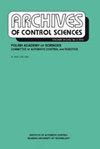随机分布对象排序中的人机合作
IF 1.1
4区 计算机科学
Q4 AUTOMATION & CONTROL SYSTEMS
引用次数: 0
摘要
本文提出了教机器人控制器执行可使用视觉系统识别的不同特征的对象的自主分离操作的可能性。物体可以在机器人场景上自由排列,也可以覆盖其他物体。在学习阶段,机器人操作员通过将人类手中的后续物体移动到容器a,将绿色物体移动到容器B等方式来呈现分离方法。机器人系统在识别出使用视觉系统进行隔离的想法后,以自主的方式继续这项工作,直到所有识别的物体都从机器人场景中移除。对于收集隔离对象的容器的尺寸、形状和位置没有限制。所开发的算法在配备两台现代机器人KUKA LBR iiwa 14 R820的试验台上进行了验证。本文章由计算机程序翻译,如有差异,请以英文原文为准。
Human–robot cooperation in sorting of randomly distributed objects
The paper presents the possibilities of teaching a robot controller to perform operations of autonomous segregation of objects differing in features that can be identified using a vision system. Objects can be arranged freely on the robot scene also covered withothers. In the learning phase, a robot operator presents the segregation method by moving subsequent objects held in a human hand, e.g. a red object to container A, a green object to container B, etc. The robot system, after recognizing the idea of segregation that is being done using the vision system, continues this work in an autonomous way, until all identified objects will be removed from robotic scene. There are no restrictions on the dimensions, shapes and placement of containers collecting segregated objects. The developed algorithms were verified on a test bench equipped with two modern robots KUKA LBR iiwa 14 R820.
求助全文
通过发布文献求助,成功后即可免费获取论文全文。
去求助
来源期刊

Archives of Control Sciences
Mathematics-Modeling and Simulation
CiteScore
2.40
自引率
33.30%
发文量
0
审稿时长
14 weeks
期刊介绍:
Archives of Control Sciences welcomes for consideration papers on topics of significance in broadly understood control science and related areas, including: basic control theory, optimal control, optimization methods, control of complex systems, mathematical modeling of dynamic and control systems, expert and decision support systems and diverse methods of knowledge modelling and representing uncertainty (by stochastic, set-valued, fuzzy or rough set methods, etc.), robotics and flexible manufacturing systems. Related areas that are covered include information technology, parallel and distributed computations, neural networks and mathematical biomedicine, mathematical economics, applied game theory, financial engineering, business informatics and other similar fields.
 求助内容:
求助内容: 应助结果提醒方式:
应助结果提醒方式:


